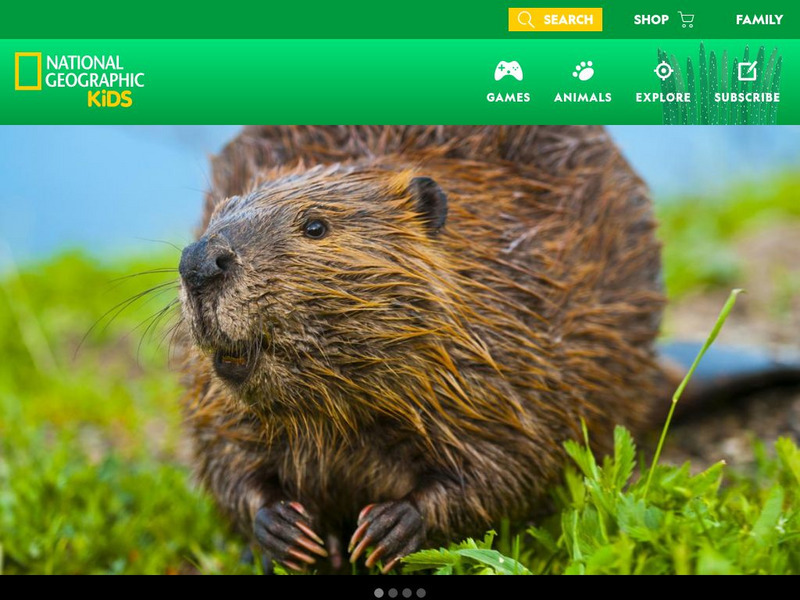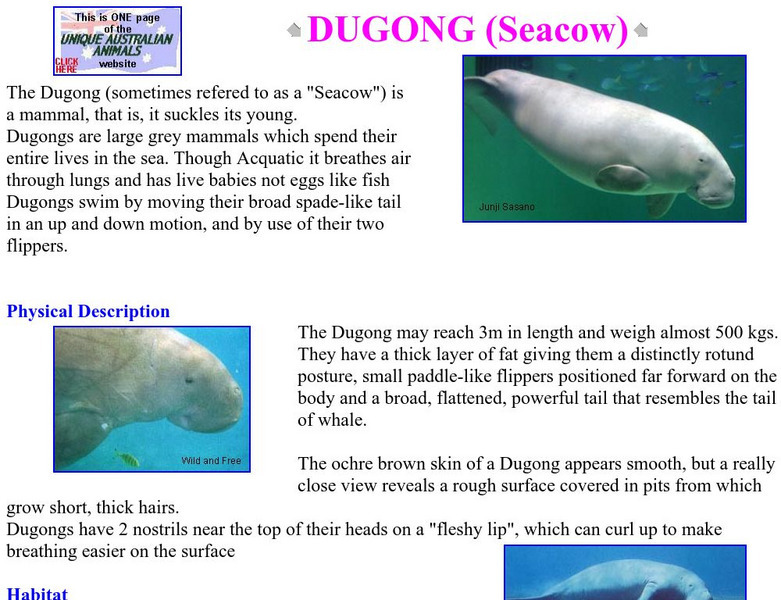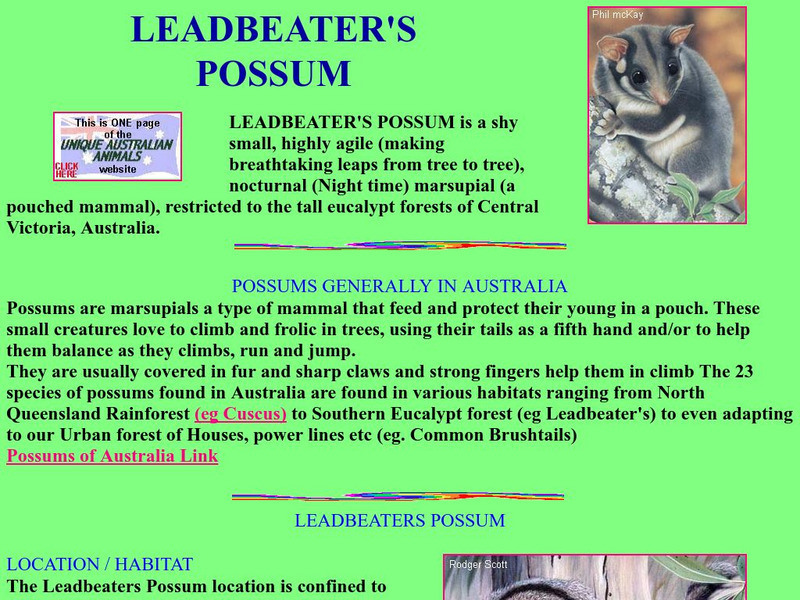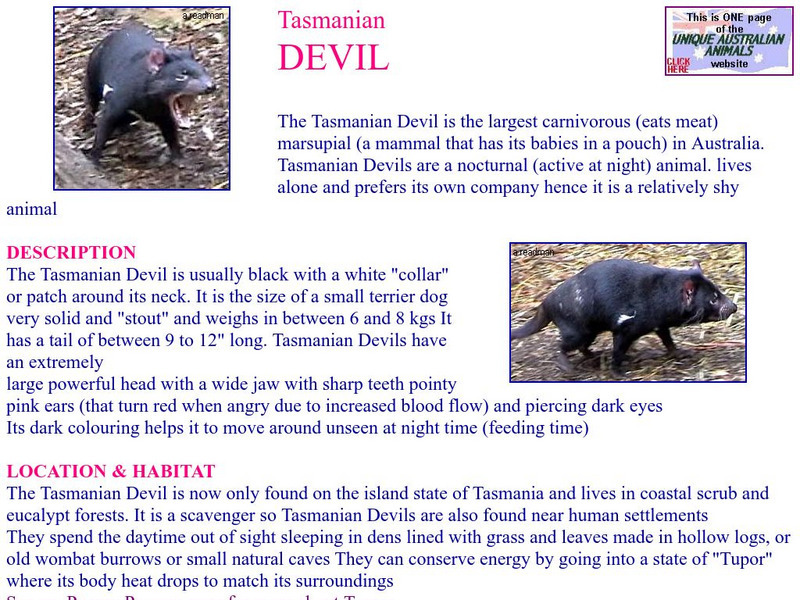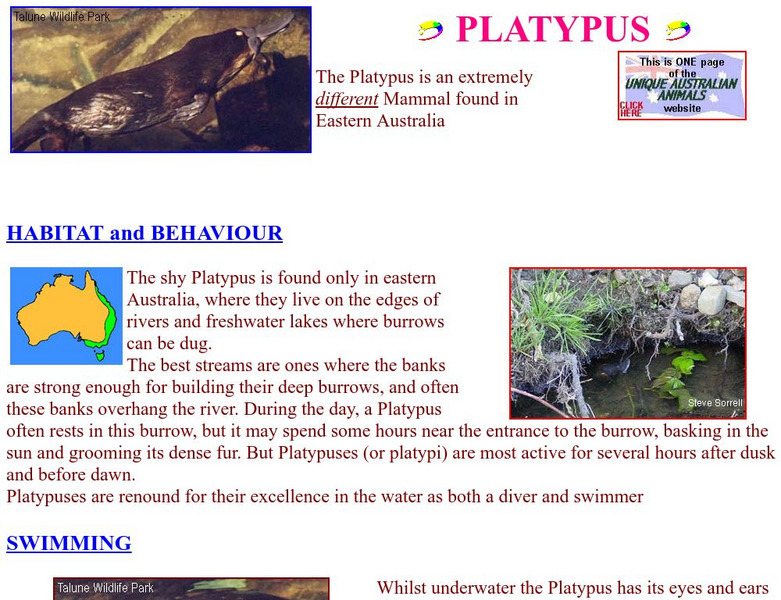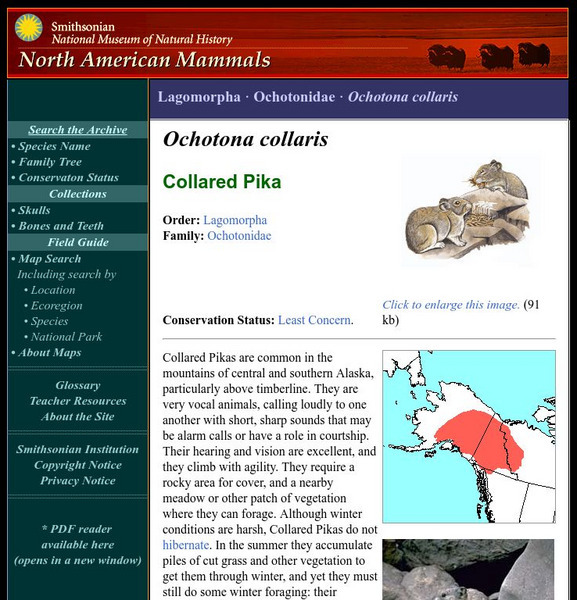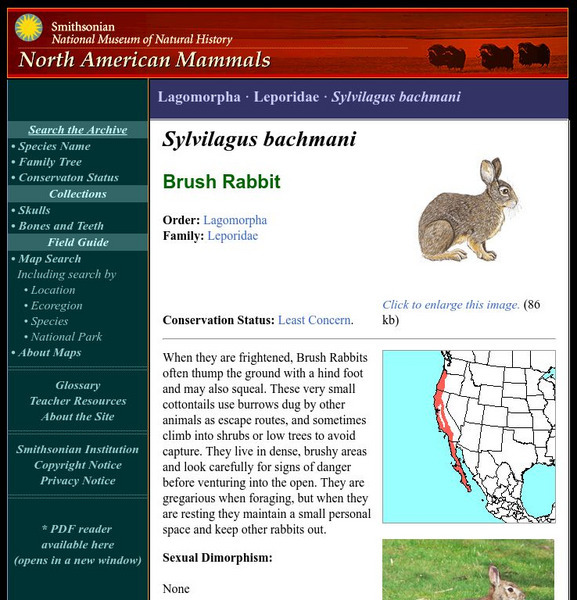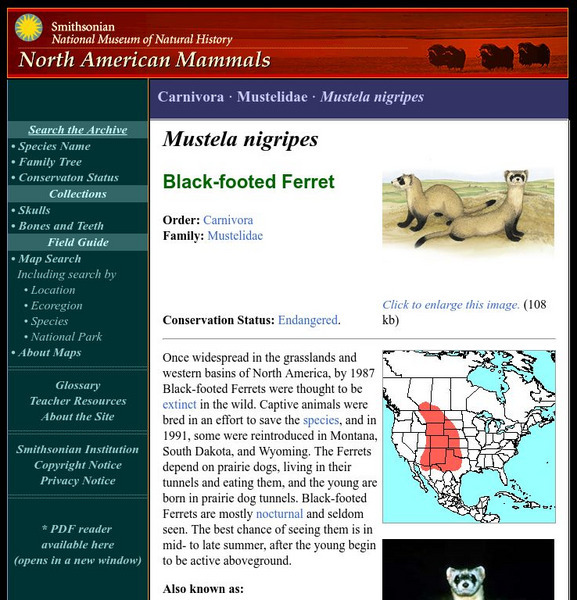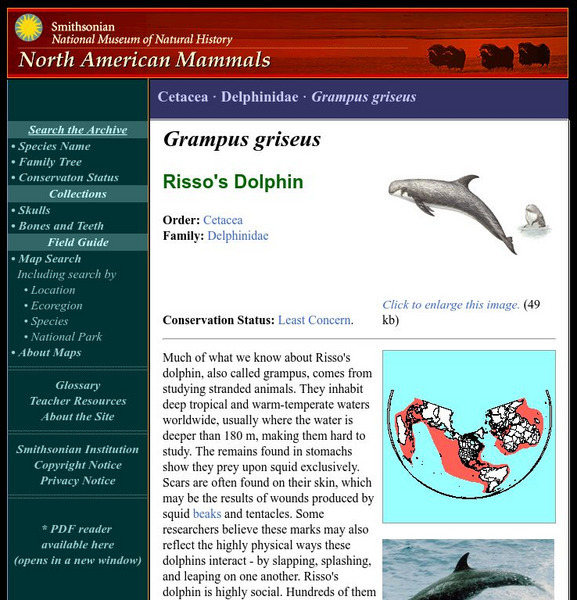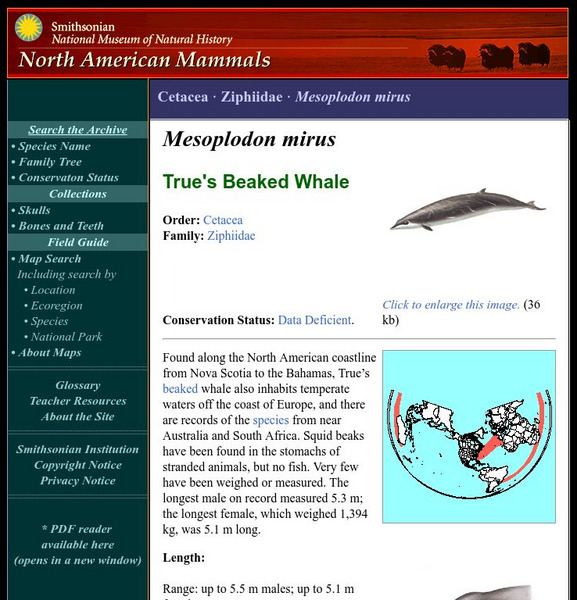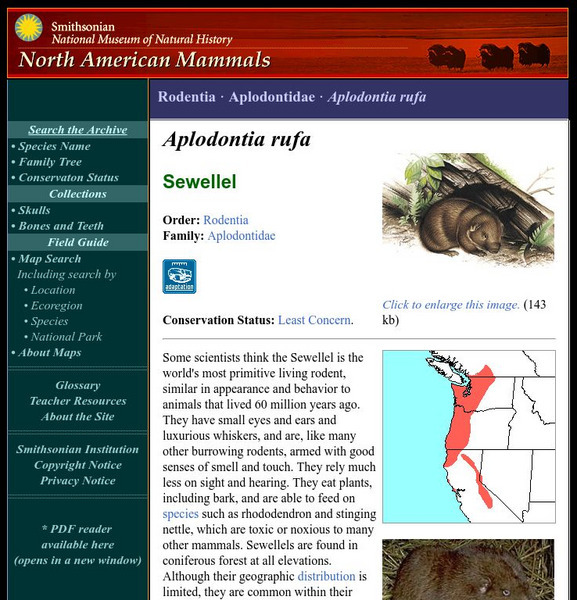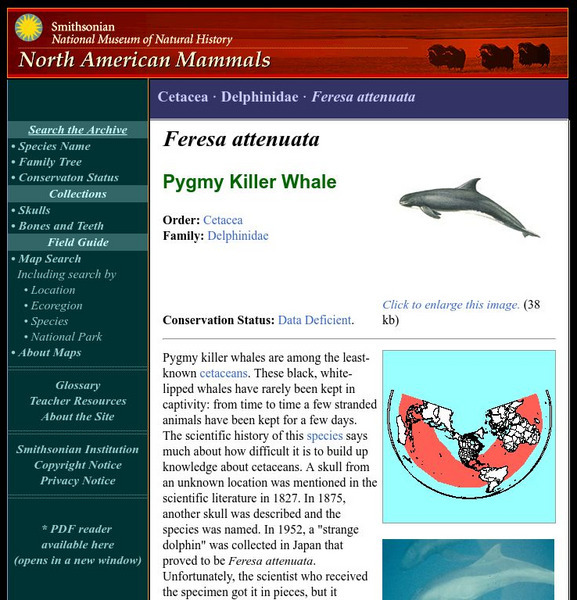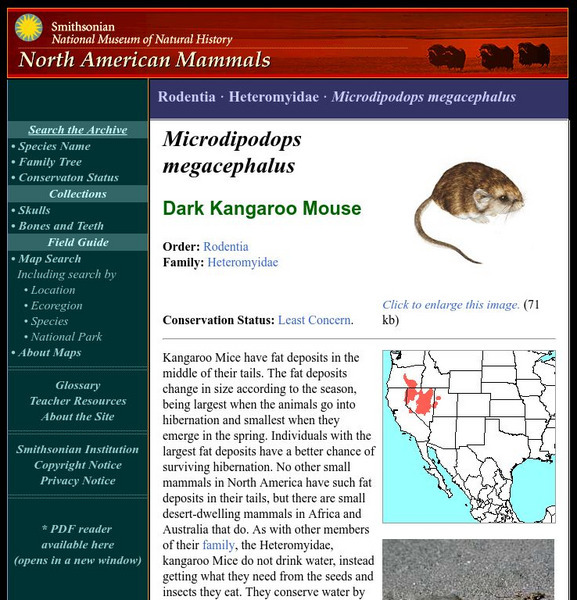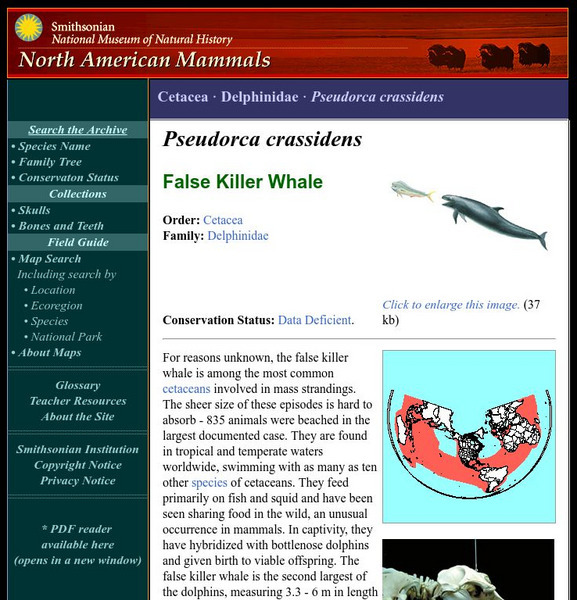Hi, what do you want to do?
Saint Louis Zoo
Saint Louis Zoo: Cheetah
Learn animal facts about habitat, behavior, speed, and appetite, and most importantly, discover the threats that these amazing animals face today.
Environmental Education for Kids
Eek!: Environmental Education for Kids
This site provides illustrations, descriptions, and species of amphibians, birds, fish, insects, invertebrates, mammals, reptiles, and endangered species.
DLTK
Kid Zone: Animal Classes
A comprehensive and colorful site that lists the various classes of animals with pictures and descriptions.
National Geographic Kids
National Geographic Kids: Animals: Zebras
Click-through facts-and-photo file about zebra characteristics, diet, and habitat. Includes a map of Africa that pinpoints its range and a video that shows zebras in action.
National Geographic Kids
National Geographic Kids: Animals: Hedgehogs
National Geographic provides great information on hedgehogs. Check out the "fun facts," listen to what a hedgehog sounds like, watch a hedgehog in action, or find out where in the world you can find hedgehogs.
National Geographic Kids
National Geographic Kids: Animals: Beavers
Click-through facts-and-photo file about beaver characteristics, diet, and habitat. Includes a map of the countries that pinpoint its range and a video that shows these large rodents in their habitat.
Curated OER
Rainforest Mammals
This commercial site explores the types of animals you can find in the Australian rainforest. Detail information is available down to the species level.
Unique Australian Animals
Unique Australian Animals: Dugong
Unique Australian Animals introduces you to the dugong or sea cow, an mammal that is similar to the manatees found in Florida.
Unique Australian Animals
Unique Australian Animals: Leadbeater's Possum
Unique Australian Animals profiles the marsupial mammal Leadbeater's possum with photos and text.
Unique Australian Animals
Unique Australian Animals: Sugar Glider
Sugar Glider, scientifically called Petaurus breviceps, is a small arboreal gliding possum, and a type of marsupial mammal.
Unique Australian Animals
Unique Australian Animals: Tasmanian Devil
The Tasmanian devil is a real Australian marsupial mammal and nothing like the cartoon character as you will find out in this illustrated article.
Unique Australian Animals
Unique Australian Animals: Platypus
The duck-billed platypus of eastern Australia is one of two mammals that bear their young in eggs. This illustrated article features many facts and photographs about this intriguing animal.
Smithsonian Institution
National Museum of Natural History: American Mammals: Collared Pika
Collared Pikas are common in the mountains of central and southern Alaska, particularly above the timberline. They are very vocal animals, calling loudly to one another with short, sharp sounds that may be alarm calls or have a role in...
Smithsonian Institution
National Museum of Natural History: American Mammals: Brush Rabbit
When they are frightened, Brush Rabbits often thump the ground with a hind foot and may also squeal. These very small cottontails use burrows dug by other animals as escape routes, and sometimes climb into shrubs or low trees to avoid...
Smithsonian Institution
National Museum of Natural History: American Mammals: Black Footed Ferret
Once widespread in the grasslands and western basins of North America, by 1987 Black-footed Ferrets were thought to be extinct in the wild. Captive animals were bred in an effort to save the species, and in 1991, some were reintroduced...
Smithsonian Institution
National Museum of Natural History: American Mammals: Risso's Dolphin
Much of what we know about Risso's dolphin, also called grampus, comes from studying stranded animals. They inhabit deep tropical and warm-temperate waters worldwide, usually where the water is deeper than 180 m, making them hard to...
Smithsonian Institution
National Museum of Natural History: American Mammals: True's Beaked Whale
Found along the North American coastline from Nova Scotia to the Bahamas, True's beaked whale also inhabits temperate waters off the coast of Europe, and there are records of the species from near Australia and South Africa. Squid beaks...
Smithsonian Institution
National Museum of Natural History: American Mammals: White Throated Woodrat
Woodrats are also known as Packrats, because they cache various manmade objects in their dens. This habit of collecting foreign objects is useful to scientists, who can place numbered sticks throughout an area and later open a den,...
Smithsonian Institution
National Museum of Natural History: American Mammals: Pygmy Rabbit
Pygmy Rabbits dig extensive burrow systems, which are also used by other animals. Loss of habitat is a direct threat to this species, which depends on big sagebrush, particularly mature stands of it. Learn more about the Brachylagus...
Smithsonian Institution
National Museum of Natural History: American Mammals: Townsend's Chipmunk
Clear-cut logging, which destroys habitat for some animals, offers good living conditions for Townsend's chipmunks. They find denning sites, cover, and food among the fallen, decaying logs and sprouting evergreens. Learn more about the...
Smithsonian Institution
National Museum of Natural History: American Mammals: Mountain Beaver
Some scientists think the Mountain Beaver is the world's most primitive living rodent, similar in appearance and behavior to animals that lived 60 million years ago. They have small eyes and ears and luxurious whiskers, and are, like...
Smithsonian Institution
National Museum of Natural History: American Mammals: Pygmy Killer Whale
Pygmy killer whales are among the least-known cetaceans. These black, white-lipped whales have rarely been kept in captivity: from time to time a few stranded animals have been kept for a few days. Learn more about the Feresa attenuata,...
Smithsonian Institution
National Museum of Natural History: American Mammals: Dark Kangaroo Mouse
Kangaroo Mice have fat deposits in the middle of their tails. The fat deposits change in size according to the season, being largest when the animals go into hibernation and smallest when they emerge in the spring. Learn more about the...
Smithsonian Institution
National Museum of Natural History: American Mammals: False Killer Whale
For reasons unknown, the false killer whale is among the most common cetaceans involved in mass strandings. The sheer size of these episodes is hard to absorb - 835 animals were beached in the largest documented case. Learn more about...
Other popular searches
- Classify Animals and Mammals
- Australian Animals Mammals
- Science Animals Mammals
- Animals Mammals Activities
- Animals Mammals Reproduction









